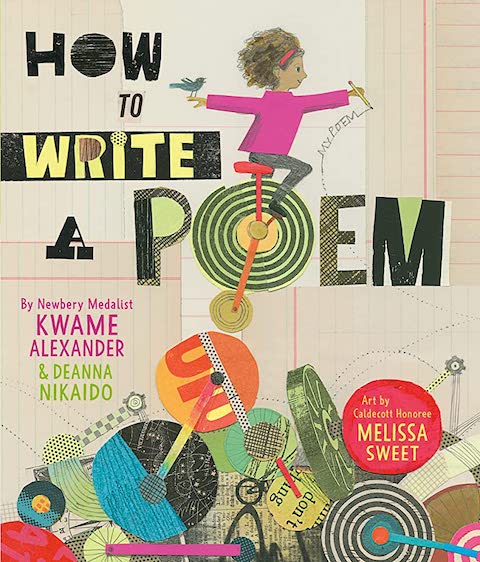
Quill Tree Books | 978-0063060906
As I write, it’s the last day of National Poetry Month in the US, so it’s not surprising that earlier today, I read an article about poetry in the Council Chronicle, a professional journal about language arts and literacy published three times a year by NCTE. The article,”The Power and Possibilities of Children’s Poetry” by Adrienne Samuels Gibbs quotes poet Terry Blackhawk reminding teachers that “There are so many exciting ways to build collaboration through poetry,” and poet and teacher Georgia Heard who adds, “… there are rules and forms – you have to know craft tools; but that’s the not the experience of poetry.”
I also listened to poet Maggie Smith, author of You Could Make This Place Beautiful, saying much the same, including that even when we may not always understand exactly what a poem means, we can pay attention to how a poem moves through us, how it sounds in our ears, how it makes us feel.
The words of these poets resonated with me because that’s been my experience. Poetry can be an integral part of a school community when it’s presented in a way that helps students experience the poem, rather than worry about dissecting the poem’s meaning.
Which says to me that there’s something in poetry for ALL of us. A connection, an entry point, a feeling that touches something deep inside that we might not be able to articulate. And, to be clear, this doesn’t mean that every poem is for every reader. It means that – in the same way we all have our own set of likes and dislikes when it comes to reading fiction, there will poems that speak to us and poems that don’t. And that’s okay.
Unfortunately, the same thoughts that can make reading poetry feel daunting, sometimes make writing poetry feel impossible. Which is why I love How to Write a Poem, by Kwame Alexander and Deanna Nikaido, with art by Melissa Sweet. Like a road map, young poets can discover a concrete way to begin…
Begin with a question
like an acorn
waiting for spring…
… Next, listen to the grass,
the flowers,
the trees –
anything
that’s friends with
the sun.
HOW TO WRITE A POEM invites writers to trust the words will come. That they are, in fact, “raining everywhere…,” dancing “with your joy…,” ” at the tip of your heart…,” “waiting to slide down your pencil into your small precious hand…”
Have you written a poem lately? It’s been about a month since I have and after reading How to Write a Poem, I feel inspired to get back to it. Maybe you will too?
**
Pair this book with POETRY MATTERS: Writing a Poem from the Inside Out by Ralph Fletcher










